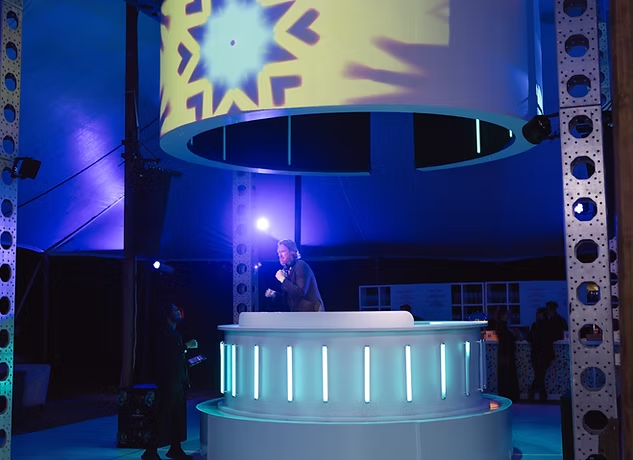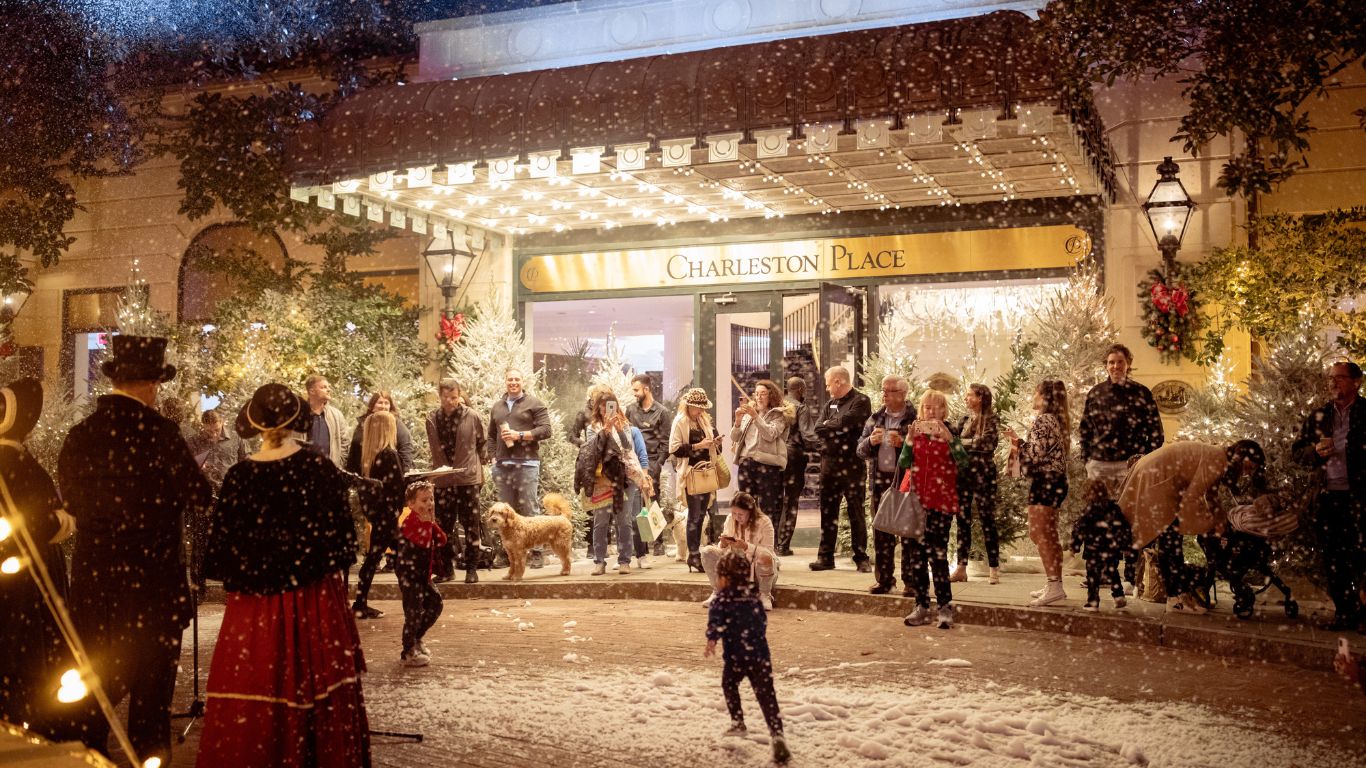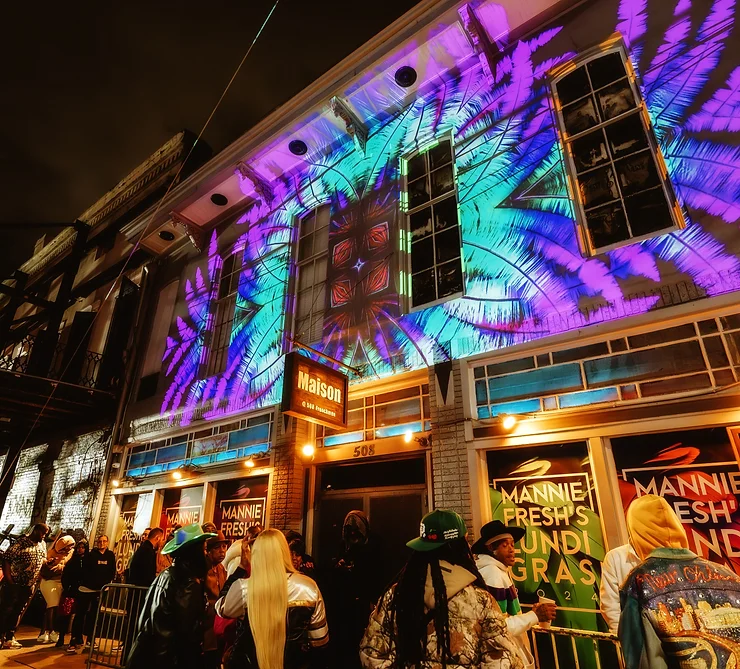What is projection mapping? In this guide, we will explore the world of 3D projection mapping art and how you can use it to enhance your business.
WHAT IS PROJECTION MAPPING?
Projection mapping, also known as video mapping, is a technique that allows images and video to be projected onto non-flat surfaces. This technique is becoming increasingly popular in the world of advertising, events, and even art installations.
HOW DOES Projection Mapping WORK?
Projection mapping is a technique that uses projectors to project images or videos onto three-dimensional objects.
- The technique works by using software to warp and mask the projected image or video so that it fits perfectly onto the object.
- This creates an illusion of the object coming to life, with the images or videos appearing to interact with the object’s shape and movement.
WHAT ARE THE MOST COMMON USES of Projection Mapping ART?
Projection mapping has a wide range of uses, from advertising to entertainment. Some common uses of projection mapping include:
- Advertising: Projection mapping is a powerful tool for creating attention-grabbing advertisements. By projecting an advertisement onto a building or other non-flat surface, businesses can create a unique and memorable experience for viewers.
- Events: Projection mapping is also used in events such as concerts, festivals, and product launches. By projecting images and videos onto the stage or other surfaces, event organizers can create immersive experiences for attendees.
- Art Installations: Projection mapping is increasingly being used in art installations to create unique and interactive works of art. Artists can use projection mapping to project images and videos onto sculptures, buildings, or other objects, creating a dynamic and engaging experience for viewers.
How Do I Use Projection Mapping For My Business?
If you are interested in using projection mapping for your business, there are a few key things to keep in mind. First and foremost- you should definitely contact us here at PRIZM, and we will make sure you arr setup properly! Here are some tips for getting started:
- Choose the right surface: When selecting a surface for projection mapping, it is important to choose a surface that is flat and has a uniform texture. This will ensure that the images or videos are projected accurately and appear seamless.
- Use high-quality projectors: To create high-quality projection mapping, it is important to use high-quality projectors. Look for projectors with high lumens and contrast ratios to ensure that the images are bright and clear.
- Use the right projection mapping software: To create projection mapping, you will need to use specialized software that can warp and mask images or videos to fit onto non-flat surfaces. There are a variety of software options available, so be sure to choose one that is user-friendly and meets your needs.
- Experiment with different visual effects: Projection mapping allows for a wide range of effects, from simple animations to complex interactive experiences. Experiment with different effects to find the ones that work best for your business.
PRIZM Projection Mapping: Expert Answers to Your Top Questions
To view the answer to any question below, simply click the arrow icon located on the right side of the question.
What are the most common uses of projection mapping in advertising?
It’s often used for product launches, brand activations, and eye-catching outdoor campaigns to create immersive experiences that attract large audiences.
How can projection mapping enhance events like concerts and festivals?
How can projection mapping enhance events like concerts and festivals?
It can create dynamic visuals, transform stages, and sync with music to elevate the experience, making events more exciting and unforgettable.
How can PRIZM help me get started with projection mapping for my business?
How can PRIZM help me get started with projection mapping for my business?
PRIZM offers expert guidance, equipment, and tailored solutions to help businesses use projection mapping effectively, even if you’re new to it.
How is Projection Mapping Used in art installations?
How is projection mapping used in art installations?
Artists use it to add movement, depth, and interactivity to static works, creating multisensory installations that captivate viewers.
WHAT EQUIPMENT IS NEEDED FOR HIGH QUALITY PROJECTION MAPPING?
What equipment is needed for high-quality projection mapping?
You’ll need a high-resolution projector, a media server or computer, mapping software, and sometimes 3D modeling tools, depending on the complexity.
WHAT IS THE BEST SOFTWARE FOR 3D PROJECTION MAPPING ON OBJECTS?
What is the best software for projection mapping on 3D objects?
Popular options include MadMapper, Resolume Arena, and TouchDesigner, as they’re versatile and beginner-friendly.
CAN PROJECTION MAPPING. BE USED FOR SMALL SCALE PROJECTS?
Can projection mapping be used for small-scale projects?
Absolutely! It works great for things like product showcases, tabletop displays, or small art pieces.
WHAT ARE SOME VISUAL EFFECTS THAT CAN BE ACHIEVED WITH 3D PROJECTION MAPPING ART?
What are some visual effects that can be achieved with projection mapping?
You can create illusions like objects moving, walls crumbling, 3D animations, and even interactive visuals that respond to touch or movement.
HOW DO YOU CHOOSE THE RIGHT SURFACE FOR PROJECTION MAPPING?
How does projection mapping differ from traditional projection methods?
Traditional projection is flat and static, while projection mapping aligns visuals with 3D surfaces, creating dynamic, immersive effects.

ARE YOU READY TO TRANSFORM YOUR EVENT OR SPACE?
In conclusion, projection mapping is a powerful tool for businesses looking to create unique and immersive experiences for their customers.
By understanding the basics of projection mapping and following best practices, businesses can create attention-grabbing advertisements, engaging events, and dynamic art installations.
Whether you are a marketer, event organizer, or artist, projection mapping is a technique worth exploring.






